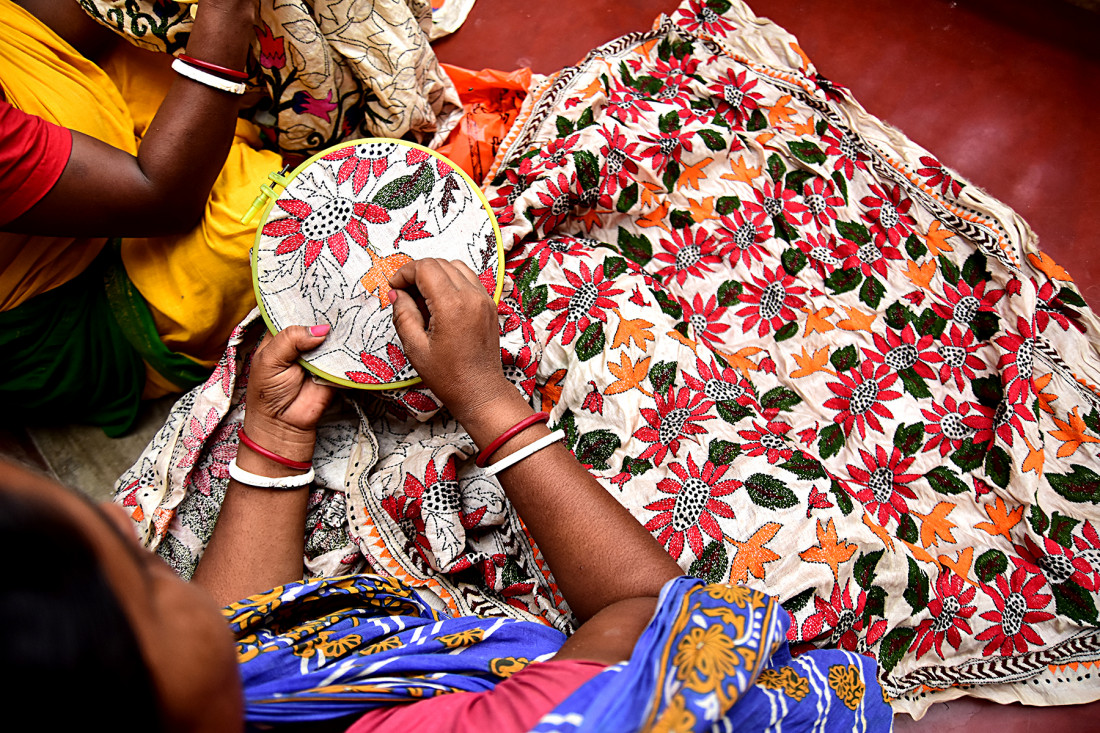When it comes to the richness of art and culture, West Bengal stands out to be one of the most unique and diverse states. The foreign powers play a major role in the gradual changes that influenced the arts and crafts, providing an artistic diversity in the forms of dance, music, traditional handicrafts, painting, and carving. However, Bengal prides itself on the imprint which it carries beyond the foreign influences, ancient and modern.
Paintings of West Bengal
Patachitra Painting
One of the most magnificent cultural heritages of West Bengal is the Patachitra painting. Naya village of Paschim Medinipur area shelters approximately 250 Patuas or chitrakars, who specialize in the art of Patachitra. Innovative aspects such as Durga Pat, Chalchitra, Kalighat Patachitra, Medinipur Patachitra, and so on are peculiar to West Bengal.
Different regions of Bengal have expertise in the creation of different colours and designs of Patachitra painting. For instance, Patachitra art of Purulia specializes in the shade of burnt sienna covered with white and yellow patches. The scrolls of the pots of Bankura, Birbhum, and Burdwan are especially known for their bright red background, whereas the scrolls of Hooghly prefer a dark brown shade.
Chalchitra
A part of Bengal Patachitra represents the Chalchitra art, which is also known as the Debi Chal or Durga Chala. The Chalchitra art generally adorns the background of the Durga idol.
The Patua artists also call it ‘Pata Lekha’, which means the writing of Patachitra. The origin of this art form is found to be 300–400 years ago when old idols of Nabadwip Shakta Rash used Chalchitra as a part of the Durga idol. It continues to be one of the most popular paintings even today.
Durga Sara/ Durga Pot Painting
Another painting related to Patachitra is the Durga pot or Durga Sara. The artists paint the picture of the deity of Goddess Durga in the middle of the Sara. Pictures of Shiva, Nangi-Vringi, Brahma, Vishnu, Ram, Sita are also painted in a semi-circular pattern. The paintings are detailed and vibrant.
These Saras or pots are also worshiped in the Hatsarandi Sutradhar society of the Birbhum district and Katwa region during the festival of Durga puja. Krishnanagar Rajrajeshwari Durga is unique and popular in West Bengal in this respect.
Embroidery of West Bengal
Kantha Stitch
‘Kantha’ meaning ‘patched cloth’ is a traditional folk art peculiar to Bengal. Owing to its aesthetic appeal and handmade characteristics, this embroidered cloth is used in making sarees, cushion covers, bedsheets, and bedspreads for infants, quilts, and so on.
Skilled rural women make the use of soft cotton clothes and their ingenious craftsmanship is illustrated through the gentle running stitches creating beautiful motifs of flowers, animals, birds, and so on. The stitches throughout the cloth lend a wrinkly and wavy effect.
Based on how the finished product is used, Kantha embroidery can mainly be of two types- Lepkantha and Sujni Kantha.
In the early days, Kantha served a daily household purpose; whereas today, they are commercially produced heightening the aesthetic appeal.
Nakshi Kantha is popular as an age-old art tradition of Bengal. Prominent in the states of Bangladesh, this art has gradually created a place in the Eastern Indian states of West Bengal and Assam.
The word “Nakshi” is derived from the word “Naksha”, meaning artistic patterns. The colourful patterns and the meticulous running stitches amplify the visual harmony of folk art.
Picture Source: Kolkata On Wheels



